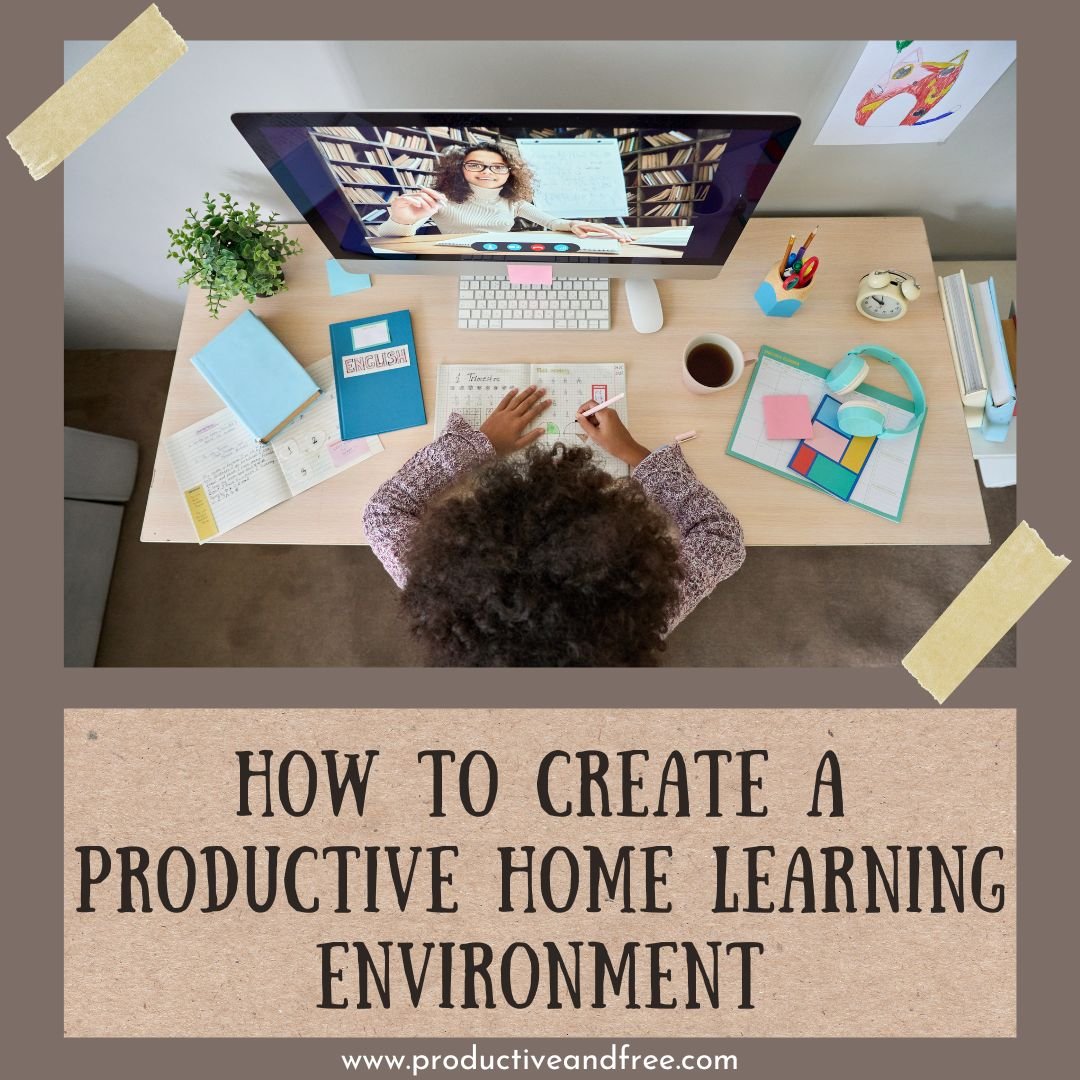How to Create a Productive Home Learning Environment
Are you struggling to transform your home into an effective learning environment? With more and more of us studying from home, it's easy to feel a bit lost. Maybe you're a parent trying to balance work and helping your child learn. Or perhaps you're a student constantly distracted by everything at home.
In this article, we'll share simple tips to help you create a productive learning space at home. We'll talk about setting up your space right and keeping yourself motivated. Let's dive in and see how you can make learning at home work for you!
Designate and Personalize the Learning Space
The first step towards creating a productive home learning environment is to establish a dedicated space specifically designed for learning activities. Choose a location that aligns with your child's preferences and learning style.
Some children thrive in quiet isolation, while others may prefer a bit of background noise. Regardless of their preference, this space should be free from distractions and clutter, allowing them to concentrate fully on their studies.
Personalizing the learning space is a proven strategy to boost motivation and engagement. Studies have found that personalizing the learning space can increase motivation by up to 27%.
Encourage your child to decorate their study area with inspirational artwork, colorful posters, or cherished mementos. This sense of ownership and self-expression can significantly enhance their enthusiasm for learning.
Minimize Distractions
In today's digital age, distractions abound. Minimizing them is crucial to maintain focus and productivity. Implement strategies to reduce potential interruptions during dedicated learning hours. Consider a no-phone policy or the use of apps to block distracting websites and social media platforms.
The impact of distractions on learning is significant. Research from the North Carolina Department of Public Instruction shows that students lose up to 37 minutes of study time per day due to phone distractions alone. Conversely, a distraction-free environment can increase productivity by an impressive 46%, according to the American SPCC.
Incorporate Educational Tools and Materials
Though textbooks and workbooks are essential, incorporating educational toys, puzzles, and board games can make learning enjoyable and accommodate various learning styles. These resources encourage critical thinking and creativity.
Create a dedicated space for them in your learning area for easy access. Online tutoring is effective, offering personalized support and flexibility. It helps with various subjects and provides convenience, saving time and travel. Overall, online tutoring services are valuable for navigating remote learning challenges.
Equip with Necessary Supplies and Technology
Ensure that your child has access to all the necessary supplies and technology required for their learning activities. Organize these materials in a designated area, keeping them within easy reach. Studies have shown that well-organized supplies can improve learning efficiency by 38%, as it reduces the time children spend searching for materials, allowing them to focus more on their tasks.
Consider investing in age-appropriate educational software, online resources, and digital devices that can enhance the learning experience. However, strike a balance between traditional and digital resources to cater to different learning styles and prevent excessive screen time.
Emphasize Comfort and Lighting
Physical comfort is a crucial aspect of a productive learning environment. Ensure that your child's study area is equipped with an ergonomic chair and a desk at the appropriate height. This approach helps prevent discomfort, promotes better posture, and ultimately enhances focus and concentration.
Lighting plays a significant role in creating a conducive learning atmosphere. Whenever possible, prioritize natural light, a study highlights that natural light in study spaces has been linked to a 23% increase in academic performance. If natural light is not readily available, invest in high-quality lamps or overhead lighting that mimics the benefits of sunlight.
Establish a Routine
Children thrive with structure and consistency. Establish a daily routine that mimics the school day as closely as possible, with clear times for learning, breaks, and leisure activities. This predictable schedule can reduce anxiety and help children transition smoothly between different activities.
Within this routine, incorporate designated times for focused learning, as well as opportunities for physical activity and creative expression. A balanced routine not only promotes academic success but also supports overall well-being and personal growth.
Foster a Language-Rich Environment
Learning extends beyond textbooks and worksheets, occurring through meaningful interactions and conversations. Engage your child in discussions throughout the day, encouraging them to express their thoughts, ask questions, and explore new ideas.
Incorporate activities that promote language development, such as reading aloud, storytelling, and word games. A language-rich environment nurtures communication skills, vocabulary acquisition, and critical thinking abilities – all essential components of academic success, as emphasized by various educational experts.
Promote Independence
While guidance and support are crucial, fostering independence in learners is equally important. Create an environment where your child can perform age-appropriate tasks independently, such as organizing their study materials, managing their time, and seeking out additional resources when needed.
By encouraging self-sufficiency and responsibility, you're not only supporting their academic growth but also nurturing valuable life skills that will serve them well in the future, setting them up for success in all aspects of life.
Engage in Meaningful Experiences Together
Learning should not be confined to a desk or a textbook. Involve your child in daily chores and activities, turning these experiences into valuable learning opportunities. For instance, cooking together can reinforce mathematical skills, and gardening can teach biology and environmental stewardship, as demonstrated in educational studies.
By engaging in meaningful experiences together, you strengthen your bond with your child while demonstrating the practical applications of the knowledge they acquire. This holistic approach to learning fosters a deeper appreciation for education and its relevance in everyday life.
By following these strategies, you can create a productive home learning environment that nurtures your child's academic growth, fosters a love for learning, and equips them with the skills and mindset they need to succeed. Remember, every child is unique, and it's essential to tailor these approaches to their individual needs and preferences.
With patience, creativity, and a commitment to fostering a nurturing learning atmosphere, you can unlock your child's full potential. And set them on a path towards lifelong learning and personal growth.
How will you create a learning environment for your child at home?
| Traditional Methods | Enhanced Approaches |
|---|---|
| Parental control | Child involvement in designing space |
| Rigid schedule | Flexible routines |
| Limited engagement | Active participation in learning |
| Authoritative approach | Supportive and encouraging atmosphere |
| Limited variety in activities | Incorporation of diverse experiences |
FAQs
1.How do you create a productive learning environment?
Designate a distraction-free area, keep it organized, stick to a schedule, communicate boundaries, and set goals for motivation.
2.How can we improve our home learning environment?
Assess and enhance lighting, seating, and noise levels. Invest in ergonomic furniture, bring in natural elements, use technology wisely, and adapt to changing needs.
3.How do you create a rich learning environment?
Incorporate diverse learning materials, foster collaboration, personalize the experience, provide hands-on learning opportunities, and cultivate a supportive atmosphere.
4.How will you create a learning environment for your child at home?
Involve them in designing their space, establish routines, make learning enjoyable, offer praise, and stay flexible to cater to their evolving needs and interests.
Daniel Martin
Dan has had hands-on experience in digital marketing since 2007. He has been building teams and coaching others to foster innovation and solve real-time problems. In his previous work experiences, he has developed expertise in digital marketing, e-commerce, and social media. When he's not working, Dan enjoys photography and traveling.
Pin or save this post for later!
Share in the comments below: Questions go here






